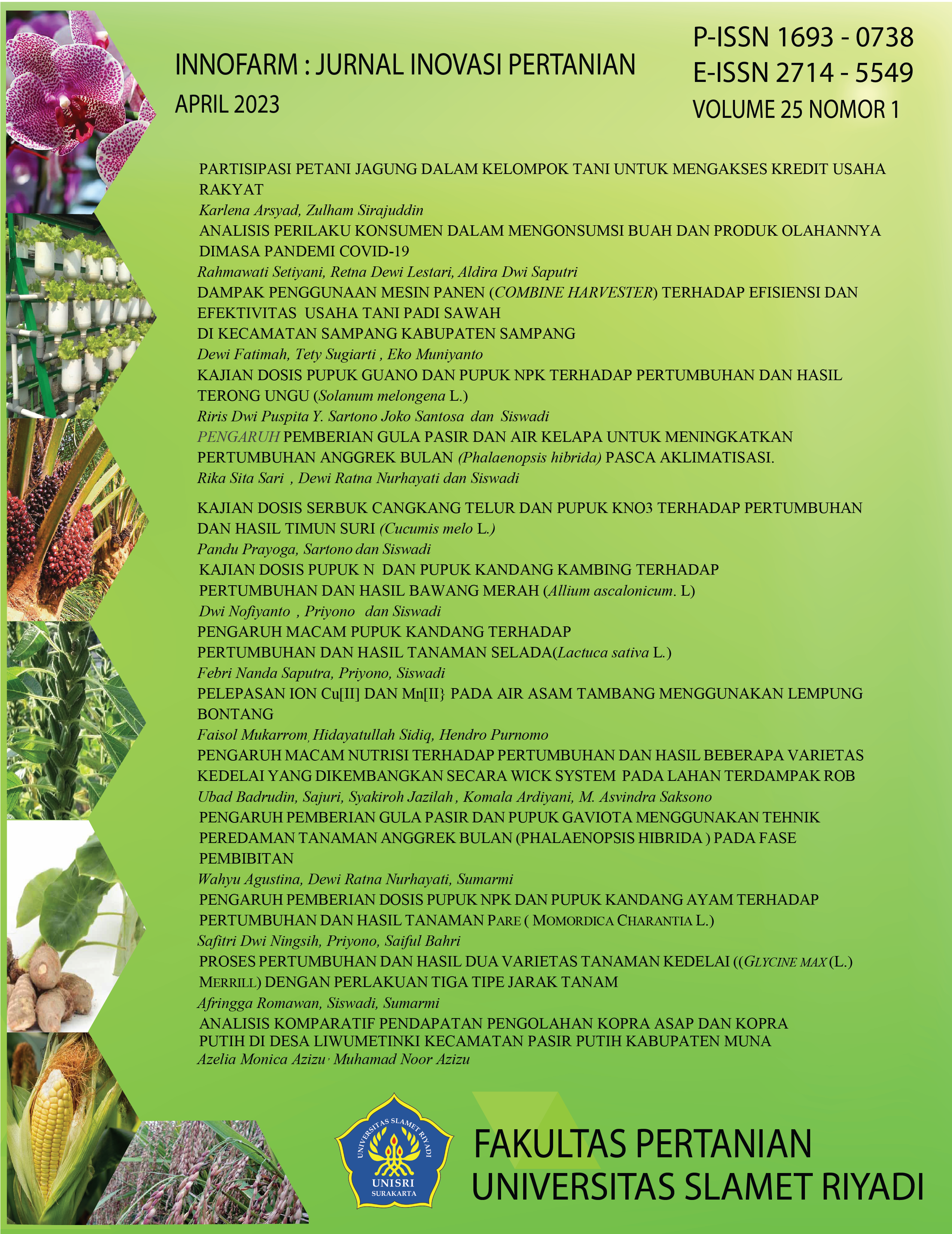EFFECT OF DIFFERENT NUTRIENTS ON GROWTH AND YIELD OF SOYBEAN VARIETIES GROWN IN WICK SYSTEM ON LAND AFFECTED BY TIDAL FLOODS
Keywords: nutrition, varieties, soybean, wick system
DOI:
https://doi.org/10.33061/innofarm.v25i1.8925Abstract
The research aims to determine the effect of various nutrients on the growth and production of several soybean varieties developed using the vertigation wick system method on land affected by tidal floods and their interactions. The research was conducted in Klidang Wetan Village, Batang Subdistrict, Batang Regency from March to June 2021 at an altitude of 5 meters above sea level. The experimental design used was Split Plot consisting of 2 factors with 3 replications. The first factor is the type of nutrients (N) as the main plot (N0 = Control, N1 = AB Mix, N2 = Phonska Fertilizer, N3 = NPK Mutiara) and the second factor is the variety (V) as a sub plot (V1 = Anjasmoro variety, V2 = Deja 1 variety, V3 = Dega 1 variety). Data were analyzed with the F test, if significantly different followed by LSD 5%. Variables observed were plant height, number of leaves, leaf area, longest root length, stem diameter, plant fresh weight, total volume of nutrients, number of active root nodules, pod weight per plant, number of pods per plant, and root volume. The results showed that the types of nutrients differed significantly on the number of leaves, leaf area, longest root length, plant fresh weight, and pod weight per plant. The best nutrition was achieved in the AB Mix treatment. Varieties differed significantly on the total volume of nutrients, the number of active root nodules and root volume. The best results were achieved in the Deja1 variety treatment. The interaction between nutrients and varieties was not significantly different on all observation variables.
Downloads
Published
Issue
Section
License
Copyright (c) 2023 ubad badrudin, sajuri, syakiroh jazilah, Komala Ardiyani, muhammad asfindra saksono

This work is licensed under a Creative Commons Attribution-NonCommercial 4.0 International License.
Authors who publish this journal agree to the following terms:
- Authors retain copyright and grant the journal right of first publication with the work simultaneously licensed under a Creative Commons Attribution License that allows others to share the work with an acknowledgement of the work's authorship and initial publication in this journal.
- Authors can separately make additional contractual arrangements for non-exclusive distribution published by the journal (e.g., publish it in a book), with an acknowledgement of its initial publication in this journal.
- Authors are allowed and encouraged to send their work via online (e.g., in the institutional repositories or their website) after published by the journal.


















